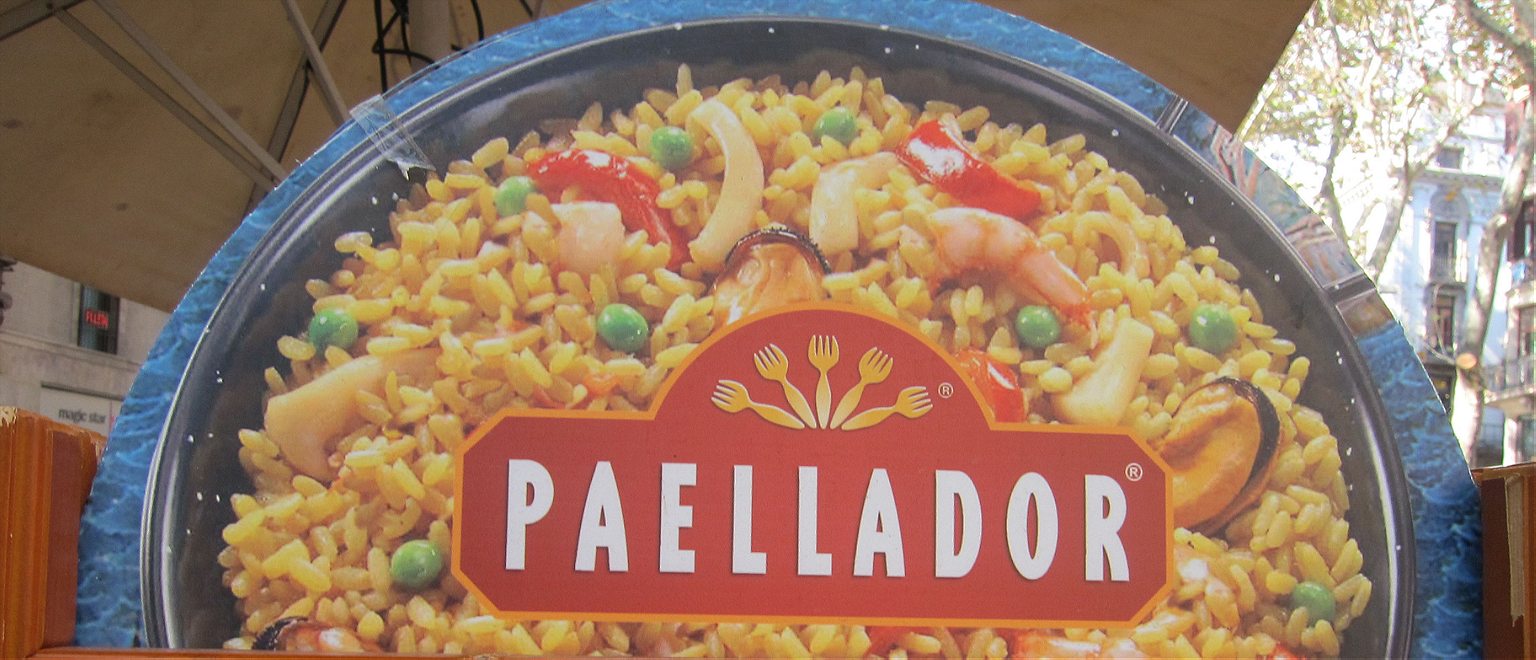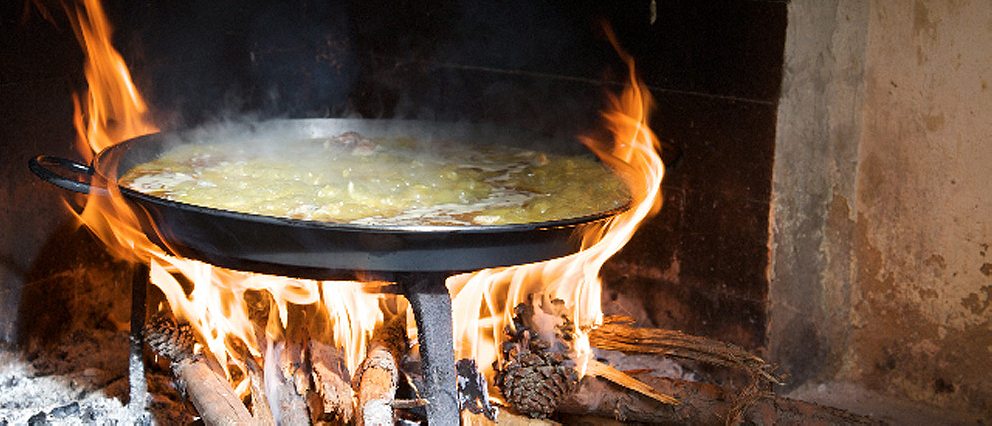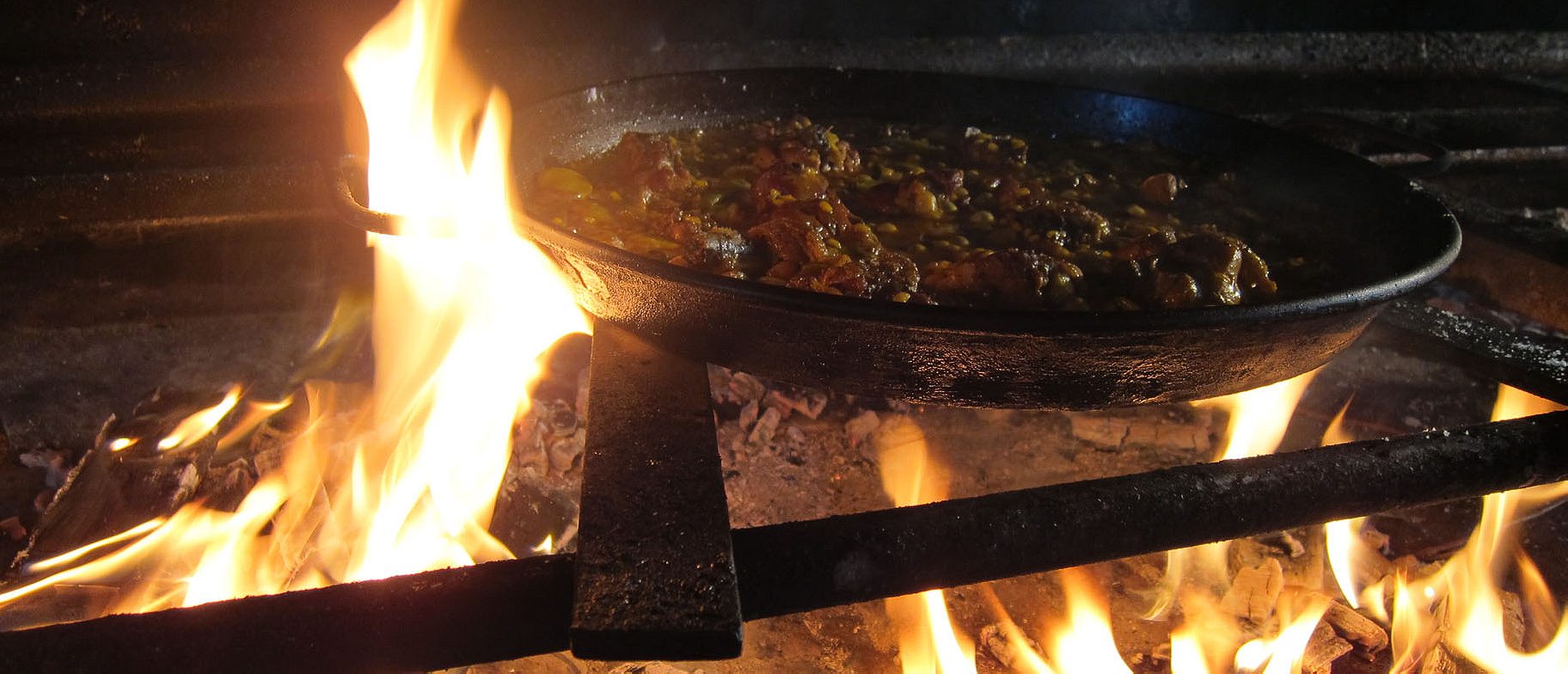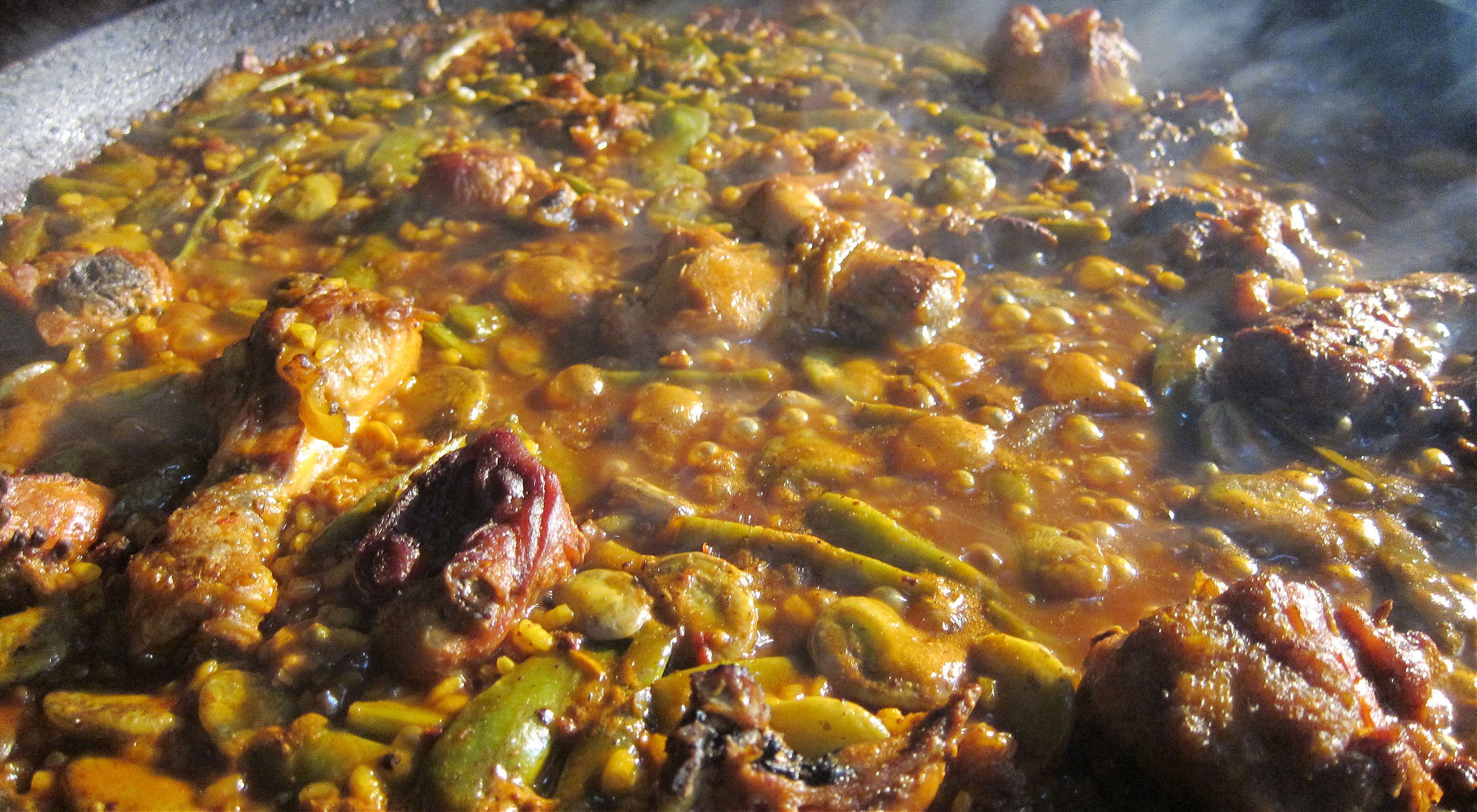One man’s decade-long pursuit for perfect paella wasn’t always the delicious journey he expected
Valencians have the confident belief, to me it seems well-founded, that nobody knows how to cook rice better than them…No one finds it strange that the Valencians have arrived to this level of perfection, unknown in the other provinces, for it is the food with which they sustain themselves almost exclusively, particularly the people with few resources who, for this reason, have studdecaied the methods to make it more palatable. Everywhere people want to imitate the Valencians, and for this they usually leave their rice half-cooked, wrongly calling it Valencian rice, persuaded that they eat their rice almost raw, having observed that the cooked grains remain whole and separate in Valencian stews.”
-Francisco de Paula Martí, 1513
All paellas are rices, but not all rices are paellas.
-Doña María Vanaclocha
In their best moments, Spaniards are the most skilled rice cooks on the planet, capable of teasing from a simple starch untold depths of flavor and texture, from soupy rice slicked with lobster essence to moist, creamy rice studded with wild mushrooms and morsels of duck to the al dente ideal of a perfect paella. Paella, of course, is Spain’s national dish, and most would say the purest example of the Spaniards’ talent with grains. But if a decade of trial and error has taught me anything, it’s that very few people know how to cook paella in this country.
I ate my first paella at 18, a plate of rice wet and yellow as a banana slug, washed down with a goblet of sangria on Barcelona’s opulent Passeig de Gracia. Later there was the seafood paella of my 21st birthday, lit by candle, prepared by an old man with a heart of first-press olive oil, served not more than a few steps from the lapping Mediterranean. More recently, there was the smoked paella of Kaiku, a celebrated rice den at the tip of Barceloneta, and the shrimp- and squid-studded rice from Taberna del Gourmet in Alicante, a port town near Valencia famous for its rice tradition. After all of this, to the chagrin of every Spaniard I know, I could say without a shred of contrarian angst that the best paella of my life came not from the shores of Spain, but from a place called Socarrat in New York.
To be sure, I am not the only one who has had paella problems. Francisco de Paula Martí, one of the early chroniclers of Spanish gastronomy, saw it coming 500 years ago. Josep Pla, the great Catalan novelist and journalist, reiterated his concern in an essay when he called paella “one of the most perverted, humiliated dishes of the national cuisine.”
So when did Spain forget how to cook paella?
The problem is most of Spain never knew in the first place. This is what happens when you try to foist upon a country a single unifying dish, especially in a country like this one, where half the regions would rather have nothing at all to do with Spain the unified nation. But since paella is the one food that every tourist landing on the Iberian Peninsula comes looking for, restaurants from A Coruña to Zaragosa are all too happy to serve it up, even if they’re regions removed from the historic cradle of paella.
Paella comes from the Valencia region, where the dish’s two most vital ingredients grow: rice and saffron. Both ingredients came to Spain through the 700-year Arabic occupation of Andalusia. Not long after the Moors were cast from the garden by the Catholics in the 15th century, records began to surface of farmers in the fields outside Valencia cooking large pans of rice, vegetables and meat over open flames. In the centuries to follow, those hodgepodge pans came into focus, first in what is considered the official paella valenciana, a mixture of chicken, rabbit and variety of legumes, with snails and duck as optional constituents. Later, as the pans of rice moved toward the coast, the paella de mariscos developed, incorporating all manners of aquatic life, but most commonly shrimp, mussels and squid.
Seems simple enough, but starting in the Franco years, with the dust from the Spanish Civil War finally settled, tourists washed on to the shores of Spain looking to eat and drink the Mediterranean way—and paella entered into a dark age. It started innocently enough with the mixing of shellfish and meat—after all, the Spaniards are masters of the surf-and-turf treatment and paella mixta seemed like a natural extension of the paella ethos. But then came wedges of bell peppers and hunks of chorizo, broccoli florets and frozen green peas. Soon, turmeric or artificial coloring took the place of expensive saffron as a wave of cheaper, streamlined, school bus-yellow paellas made their way to the tourist thoroughfares around the country.
That brings us to today, where the biggest producer of paella in Spain is a mysterious purveyor called Paellador. Their signs can be spotted at restaurants, bars and cafes the country over: perfectly composed, kaleidoscopically colorful pans of paella, offered in six exciting iterations. What those signs, and the restaurants using them, fail to convey is that Paellador is a food conglomerate whose other specialties include frozen pasta carbonara, tuna pizza, and an awe-inspiring creation called fideguay, a mixture of short noodles tossed with hot dogs, bacon and ham and blanketed in melted cheese. Chances are, if you’re eating a paella in a restaurant on La Rambla in Barcelona or near the ocean in Valencia or by El Prado in Madrid, it wasn’t prepared over a wood fire by an old man whose been simmering paellas for decades; it came off the Paelldor assembly line, only to be reheated and served inside a lovely paella pan for 20€ a person.

“Paella is when the big family issues are discussed,” Jeff Koehler tells me, as we work our way through a pan of seafood paella at Barcelona’s Can Majó. Koehler is the author of La Paella, a fantastic cookbook that pays tribute to the complex world of Spanish rices. Koehler married into paella: His wife’s family comes from the Valencia countryside and for the past 15 years, Koehler has been a guest at the Sunday table, when the family gathers to share the news of the week over a generous pan of paella—usually prepared by his mother-in-law or one of her sisters.
Ask any Valenciano who makes the best paella and they’ll tell you their mom or, more likely, their dad does (paella being one of the few culinary feats that men take up at home, probably because it involves fire). Koehler’s pick for the best paella? His mother-in-law’s.
“Like many Spanish cooks, she is very picky about ingredients and this shows up in the final version. She’s been making paella nearly every weekend for 51 years, so she’s well practiced and the rice comes out perfect,” he says. “But there is also that family-ness that I so associate with the dish, of eating it among a group in a familiar, informal setting.”
The group part is vital. Spaniards don’t make rice for two people, Koehler says, citing a valuable Spanish edict: Cuantos mas seremos, mas reiremos. The more we will be, the more we will laugh. “I think that’s perfect advice for paella.”

Some Valencianos—like Koehler’s mother-in-law—go as far as refusing to eat paella in restaurants, but both for research for his book as well as eating tours he leads through Spain, Koehler has eaten at most of the great paella spots in Valencia and Catalonia—Valencia’s neighbor to the north, and a place you’d expect to find good paella at every turn. Can Majó’s seafood-strewn specimen is Koehler’s favorite paella in Barcelona, and it’s easy to see why: the seafood—plump shrimp, nuggets of chewy squid, a few huge langoustines clad in full crustacean armor—is sweet and briny, the seasoning is spot on, and the aroma from the kitchen hits you in an intense, savory wave as you walk through the door. Most importantly, the rice is first-rate: plump, swollen with seafood stock, glazed with sofrito, with just the gentlest bite at its starchy core.
“Rice is the protagonist of paella,” Koehler says. “It’s all about packing as much flavor into the rice as possible without compromising the integrity of the individual grains.”
Rice in Spain is categorized into three camps: arroz seco (dry rice), arroz caldoso (brothy rice—more soup than starch, and as such, to be eaten with a spoon) and that magical, risotto-like state of in between unctuousness called arroz meloso. Paella is a dry rice dish, named for the wide, shallow pan in which it is cooked, vital for fast, even evaporation. A traditional paella is made by browning meat (rabbit and chicken) in an immoderate amount of olive oil, then building a sofrito using chopped or grated tomatoes and a variety of legumes native to the Valencia area. When the sofrito is ready, boiling water (for meat paella) or stock (for seafood paella) is added, along with saffron, rice and a few pinches of salt.
The rice, of course, is key: the best paella is made with bomba rice, a medium grain, risotto-like rice which can absorb large amounts of liquid while still retaining its shape. A properly-cooked paella has just the barest amount of residual moisture (not liquid, which should be fully absorbed into the rice, but a combination of sofrito and fat) clinging to the rice, plus a generous socarrat, the crispy bits of rice that caramelize and cling to the bottom of the pan. (The fact that the Spaniards have a word that means “the crispy bits of rice that caramelize and cling to the bottom of the pan” is evidence of how seriously they take their rice.)

“The flavor in paella isn’t a pretty yellow, it’s the rust color of a sofrito,” says Koehler. “That’s what you want your paella to look like.”
So why do so few paellas actually look like that?
“Paella takes time. Most places these days are taking shortcuts, or just pulling a paella out of the freezer and serving it to tourists.”
Places like Can Majó clearly are doing things right, taking the time to buy excellent products, simmering stocks and sofrito to create depth of flavor, and cooking the rice with the greatest amount of care. But for as good as the rice is here, it still doesn’t register as the paella of my dreams. The rice is beautifully cooked but timid: It lacks the smoke that comes from cooking paella over an open fire, and, most vitally for me, there isn’t a single crispy grain of socarrat at the bottom of the pan.
I am still in need of my paella epiphany.
***
Benisanó is a town of 2,000 people 30 kilometers east of Valencia. It has, like all Spanish towns, an old church at its center, plus a handful of streets snaking outward, and a series of speakers strewn throughout the town that allows local officials to announce the events of the week.
I’m here based on a recommendation from José Andrés, chef at a small empire of Spanish restaurants in the States and a man who has scraped his way across many a pan of rice. Benisanó might not be much for the eyes, but it’s home to—in Andrés’ estimation—the greatest paella in all of Spain.
Rafael Vidal, the owner of Restaurant Levante, is paella royalty. His family first started serving rice out of a small in 1970 for 30 cents a plate. Five years later, the Vidal family was serving paella to the king of Spain. As Rafael tells it, the day didn’t go exactly as planned: After making the paella, the cooks were ushered back to a separate room, deemed insufficiently dressed to be in the company of the king. In the shuffling about, suddenly the king and queen appeared and approached to shake their hands. Rafael’s dad seized on the opportunity.
“Your Majesty, did you enjoy the paella?”
“Yes. Why do you ask?”
“Because me and my family are the ones who made it.”
“Well, you have a deft touch.”
Rafael takes me upstairs to see the operation, a big open cement space with wood and vine cuttings piled in the corner. Along one side of the room a long fire pit has been set up and a cook is tending to a handful of simmering pans. The walls are black with smoke and the whole room smells like a cross between a campfire and an Italian grandma’s house on Sunday afternoon.
“We cook the paella over two heats—at first very hot, encouraging evaporation, then we pull off some branches so it can finish over a lower flame.” Rafael uses wood from Valencia’s orange groves, just as paella has been made for centuries. The rabbit and chicken he sources locally, the beans—a mix of wide green beans and garrafó, a stubby white legume similar to lima beans—he grows in the family garden.

The paella, he explains, needs to rest for five minutes before eating—enough for any residual moisture to be absorbed by the rice. Then it travels downstairs via a dumbwaiter before being presented in the dining room. After taking in the sights and smells from Levante’s kitchen, these five minutes stretch well beyond the limits of my patience.
But what’s five minutes after 10 years of confusion and disappointment? There have been some tasty rice dishes along the way, but nothing that ever stuck, ever wobbled the needle of the Richter scale, no bite that ever screamed “this is why people come to Spain in search of this dish.”
Nothing that ever tasted like the plate of rice before me. Levante’s rice is suffused with the sweet smoke of the orange branches. Every grain is swollen into meaty pearls that glisten with sofrito and rendered chicken fat, all while retaining the most gentle resistance. The savory notes of the caramelized meat and vegetables saturate every last grain of rice, yet never threaten to lose their own identity in the dish.
Rafael’s paella contains just 12 ingredients, but tastes as if all of Valencia has been simmered into the grains.
“We want to protect the true paella valenciana,” says Rafael, who has spent the past five years traveling from town to town around Valencia in hopes of capturing the recipe that best represents the original dish. In the end, he’s been able to narrow it down to 10 ingredients: olive oil, chicken, rabbit, tomato, green beans, garrafó, saffron, rice, water, salt. “It’s the most representative plate of Spain. We don’t want to see it end up studded with hot dogs and cauliflower.”
After the last of the socarrat has been scraped from the pan, Rafael pulls out a photo album of paellas the same way a proud mom might show you pictures of graduation and family vacations. “Oh, here’s one we did in Washington for 500 people. We made it with boneless chicken for the Americans.”
This is a man obsessed with rice, a guy with saffron in his veins and sofrito in his soul. Before I go, I ask him what’s the most important part about paella. It’s the same question I’ve been asking people for a decade, but Vidal is the first person to answer honestly.
“The most important part? Eating it, of course.”

Paella Valenciana
Rafael Vidal has distilled years of research and travel through the villages of Valencia into this one recipe, the blueprints for the true paella valenciana. Paella takes time to master, especially learning the right ratio of water to rice, which will vary depending on many elements, including the heat source and the pan you use. To make this dish the right way, you’ll need a real paella pan, or, failing that, the widest, shallowest pan you can get your hands on. Cook it on a grill outside (preferably over a wood fire) to capture the smoky essence of a real paella.
4 lbs chicken (a mix of bone-in, skin-on thighs and drumsticks)
1 lb rabbit pieces
¼ lb chicken or rabbit liver, chopped (optional)
¼ cup olive oil
1 lb ripe chopped tomatoes
1 lb green beans, ends trimmed
1 lb large white lima or fava beans, shelled
2 ¼ lbs bomba rice (about 6 cups)
15 cups water
Large pinch saffron
Salt to taste
1 branch fresh rosemary
*Also optional are live snails, a common ingredient in paella valenciana, that should be added just as you add the water to the pan
How to Make It:
Place the pan (“paella”) over a live fire or a very large burner and add the oil. When the oil is hot, add the meat. Now the fire should be at medium/high temperature. Fry the meat until it is lightly browned. Add the liver and vegetables, about 2 minutes later, the chopped tomatoes, keeping the fire at a medium-high level. Once the meat and vegetables are nicely browned, add water, fresh rosemary, and increase the fire to high. Add the saffron and salt to taste. As soon as it starts boiling, add the rice and take the rosemary out. For a few minutes, distribute the ingredients throughout the pan, using delicate but firm movements with the spoon.
.
Keep the fire at maximum heat for 8 to 10 minutes. After this time, reduce the fire level gradually until most of the moisture has evaporated. Finally, keep the pan for an extra minute or two over a hot part of the fire to obtain the esteemed “socarrat”. (If cooking on a gas stove, increase the heat to medium-high for one minute before removing the pan.)
Take the paella off the fire and let stand for a few minutes. Serve on plates, or place it in the center of the table and dig in. Makes 10 servings
Paella Wisdom
Courtesy of Jeff Koehler, author of La Paella, photographer, and all-around excellent journalist living in Barcelona. You can follow his work here.
Do not make a paella for the first time for a large group of people. Do a practice run first to be comfortable with the pan, heat source, rice, and amount of liquid. Take notes. And then repeat using the same pan, same heat source, and same type of rice—and your notes.
Paella is a lunch dish. It is considered too heavy for dinner. My mother-in-law has been preparing paellas almost weekly for decades, and I am certain that in that time, not once has it been for dinner.
If using a really large pan on a kitchen stovetop, try straddling three burners, rotating the pan slightly every minute or two to ensure even cooking.
Do not crowd the pan. The pan gets wider; the rice does not get deeper.
Do not add onions to the paella. Paella is a “dry” rice. Onions are a wet vegetable. Add onions to other types of rice dishes, but never to a paella.
Do not cover the pan as the rice cooks. Ever.
If the liquid has evaporated and the rice is not yet done, sprinkle drops of water over the rice.
Arrós passat, per el gat. (Overcooked rice is for the cat.)